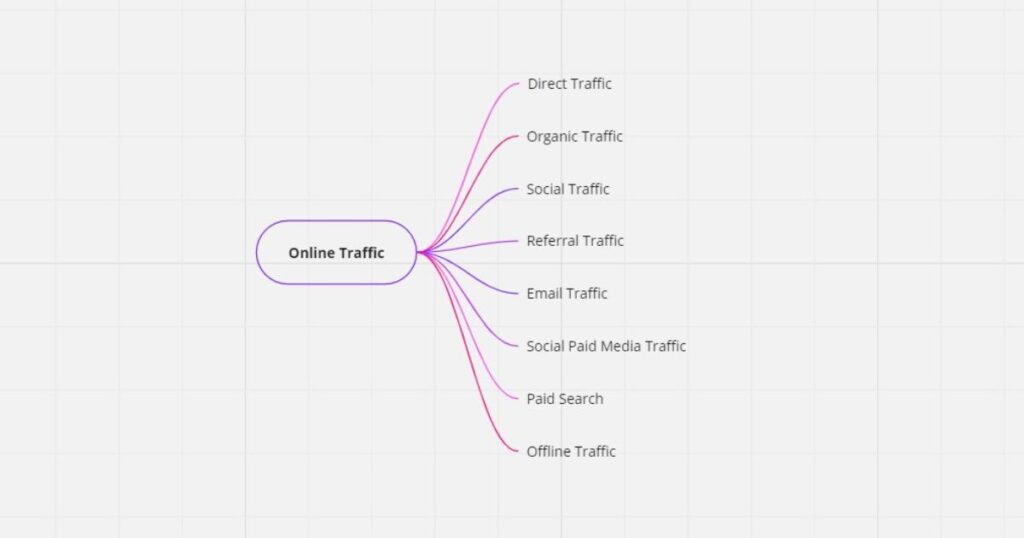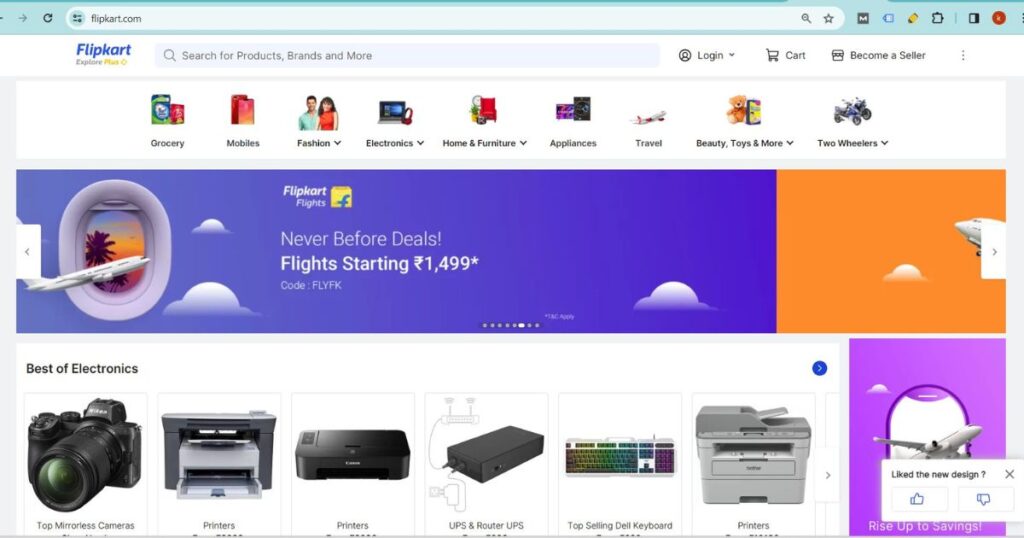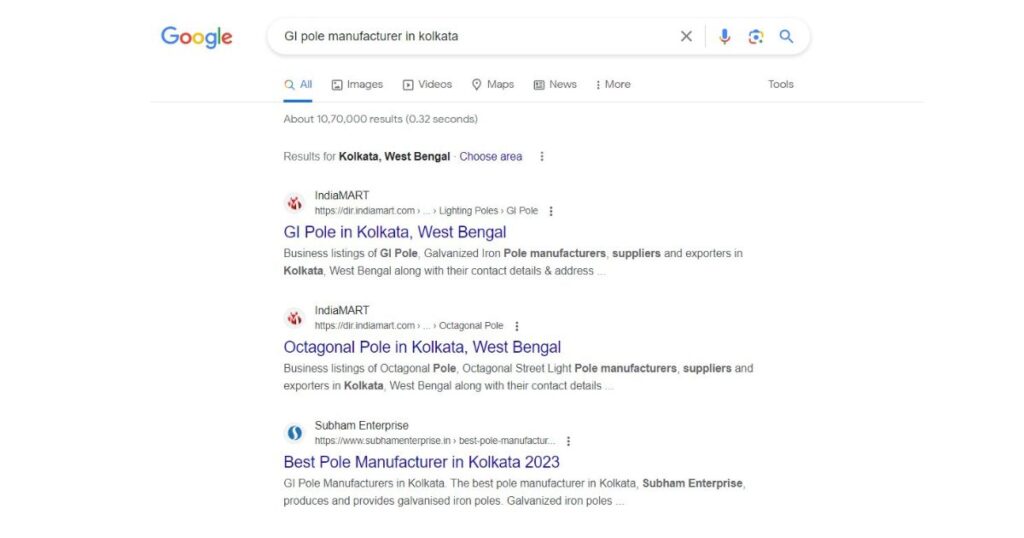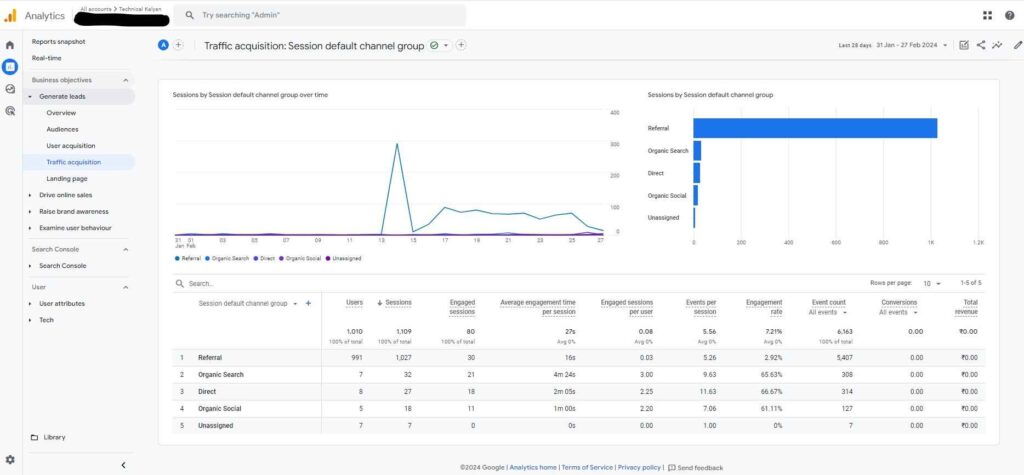We often hear the word “Traffic jams” in big cities. Traffic means the number of people. You say that there is more traffic on the road.
Well! We definitely do not discuss “Traffic jams” in this blog.
Today’s topic is online traffic sources.
So, the first thing you have to understand is the definition of web traffic.
Traffic is nothing but the number of visitors coming to a website during a particular period of time is called web traffic of a website.
That means how many visitors are looking at your website. The same thing is called web traffic or online traffic or internet traffic.
But, what are the best types of web traffic sources that will help you reach more people, segment your audience, and improve the ROI of your marketing strategies?
Before we take a look at the web traffic sources, keep in mind that knowing the different traffic sources that bring people to your website will help you understand how to improve it.
Also, to properly analyse web traffic, you must be able to distinguish between the total number of visits during a given period and the number of unique visitors, since the same person may visit the site many times.
You should also take into account factors related to the quality of the visit, such as duration or number of page views etc.
In this blog, we will go through eight different categories of web traffic sources which improve your digital marketing skills.

Table of Contents
Types of Web Traffic Sources
- Direct Traffic
- Organic Traffic
- Social Traffic
- Referral Traffic
- Email Traffic
- Social Paid Media Traffic
- Paid Search
- Offline Traffic
1. Direct Traffic
Direct traffic includes visitors from several different origins, people who directly typed your website’s URL into their search bar, people who have saved your website’s URL in their favorites and arrived through there, and people who have clicked on a link in a non-indexed document or an opened email.
In order to not lose potential direct traffic, your URLs should be clean, simple, and easy to remember. You can also invite users to bookmark your site for future visits.
Just an example, if you go to your browser, Chrome, Firefox, Mozilla, anything type Flipkart.com and click enter.
What is happening?

The visitor landed on the Flipkart homepage. So the type of traffic is called direct traffic.
If you have installed a mobile app on your phone. So if you open the app, the type of traffic is also called direct traffic.
2. Organic Traffic
Organic traffic, also called search traffic, is the number of visitors who enter a website after doing a search on Google or other search engines and clicking on one of the links on the search engine results page.

This type of web traffic can account for a very significant percentage of visits in the long run. To get more organic traffic, you will need to implement an SEO strategy.
It is often said that organic traffic is free. But this is not entirely true. Although you are not paying directly for each click, optimising your website for SEO involves an initial investment of time and resources, as well as some maintenance.
3. Social Traffic
Social networks like Facebook, Instagram, Twitter, and LinkedIn very important nowadays. People interact daily with various social media posts, pages, reels, stories etc. So people coming from social media platforms are called social traffic.
You can distinguish between the different social networks and you can go deeper into the data on clicks and interactions. Do not underestimate the power of a viral social media post.
4. Referral Traffic
This type of traffic refers to people entering a website by clicking on a link from another site like a blog or forum. It’s also called affiliate traffic.
Increasing referral traffic involves participating in active link building activities like guest blogging or submitting your site to directories.

A few days before, I uploaded a blog on “Alt Text” on my blog website “Technicalkalyan.com”. After uploading, I create backlinks to the various article submission sites. This image shows one of my blog backlinks on “Medium.com”, an article submission site. When someone clicks on the link, it redirects to my blog. It is an example of referral traffic.
However, it’s crucial to take into account Google’s policies on link building to avoid possible penalties.
5. Email Traffic
Through email marketing campaigns, you can measure success by tracking how many visitors come to your site through your campaigns. Effective email marketing management provides plenty of information about your delivery rate, open rate, clicks on links, total clicks, unique leaks, and much more.
To improve web traffic from email marketing, we recommend two best practices
Firstly, Conduct A-B tests with different versions of the same email to optimize factors such as subject, images or the time when the emails are sent out.
Secondly, use email marketing automation solutions to manage the whole process more efficiently.
6. Social Paid Media Traffic
This type of traffic refers to visitors who arrive after clicking on a pay-per-click ad on a social network. Social media ads, for example, Facebook ads or instagram ads, can effectively attract visitors to your site and give you statistics on how users behave when they arrive at your website.

Social ad platforms also provide you with a lot of data about your campaigns, like information about demographic and user interests and also user behavior.
7. Paid Search
This category includes users who come to your website after clicking on an ad from Pay Per Click (PPC) platforms like Google Ads.
Remember that these platforms incorporate different types of ads and locations. For example, with Google Ads, you can place an ad in search results, launch a campaign on youtube or place banners on third-party sites, among other options.
In order to properly evaluate the results, you will have to distinguish between different types of campaigns. Search engine ads are a very effective way of getting short-term traffic and an excellent complement to organic positioning or SEO strategies. To optimise results, pay close attention to keywords and location targeting.
8. Offline Traffic
So far, all the types of traffic we have mentioned come from digital channels. but it’s also possible for visitors to come to your website through offline sources.

This would include things like a business card, a print advertisement in a newspaper or what we call outdoor advertising, billboards, posters, and more.
Let’s discuss, how can we increase any website’s traffic?
- Create quality content. It is obvious that when you give quality content to the visitors, then paid traffic or organic traffic will both increase.
- Publish quality content regularly. Now it is not that once you give quality content and then leave it, maintain regularity to publish quality content.
- Use long tail keywords in your content. Long Tail keywords drive quality traffic rather than short tail keywords. Short tail keywords are mainly used for inquiry purposes.
- Make internal links with your web pages and blogs. Interlinking to relevant pages within your website, you can guide users to discover more content and search engines to crawl and index your site more effectively.
- Use social media platforms to drive relevant traffic to your website. Regular posting on social media platforms with website pages or blog links can drive more traffic.
- Send emails or newsletters regularly to your website visitors. You can use various email marketing tools like Convertkit. Another trusted email marketing tool is Aweber, which you can also use for marketing purposes.
Tools to Check Web Traffic
It is also important to know how much traffic is coming monthly on your website. Not only traffic but also its bounce rate or from which country it is getting the most traffic. Here we discuss a few free and paid tools to check your website traffic related to all matters.
1. Google Analytics
Now let’s talk about a free tool to check traffic. So if you have a website, if you’re the webmaster of the website, the best tool, and it’s a free tool to go with Google Analytics.
More than 75% of all the websites on the internet are powered by Google Analytics.
An interesting fact is that Google Analytics was never owned by Google. There was a company called Urchin Software Corp in 2005. Google bought it and changed the name to Google Analytics and started to give it for free. You can check through these tool’s sources of your website traffic.

Although we know Google Analytics is completely free. But they have Analytics 360, which is a paid version of Google Analytics. But most of the time, the free version is more than sufficient.
2. Adobe Analytics
Previously called Omniture, which is a completely paid tool for website analytics. Adobe Analytics is an analytics solution that enables your team and ultimately your organisation to become data-driven.
3. Competitors Traffic Analytics Tools
Competitive research tools can be valuable. It can help you conduct a proper competitor analysis. Important tools like Alexa, SimilarWeb, Ahrefs, and SEMrush, are a few tools. That you can use to check competitor’s traffic. These are just estimation tools, friends. There is no 100% guarantee that these are 100% right.
FAQs on Web Traffic Sources
What is Web Traffic?
A: In the world of the Internet, the number of users is called traffic. So, as traffic, your users are counted. The people who visit your website, reach your web pages, and read your blogs, are called web traffic.
What are the Sources of Web Traffic?
A: There are eight types of website traffic sources
- Direct Traffic
- Organic Traffic
- Social Traffic
- Referral Traffic
- Email Traffic
- Social Paid Media Traffic
- Paid Search
- Offline Traffic
Why is Website Traffic Important?
A: Website traffic is a major identifier of website success or failure and there are several reasons why web traffic is important.
- Increased visibility and increased engagement.
- Increased engagement among current customers, driving more turnover over time.
- Improved reach and new audiences By diversifying the sources of your website’s traffic.
- Increased brand awareness and loyalty as more people visit your website regularly.
- Increased website traffic can lead to more sales.
Finally, friends, I hope this blog helps you to understand the different sources of website traffic.
Which type of web traffic do you think is most important?
Let me know in the comment section.
Thanks for reading, keep learning.

